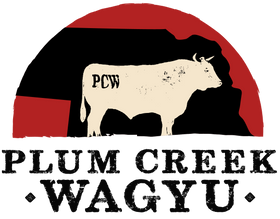Wagyu Around the World: How Different Countries Raise and Enjoy This Prized Beef
Introduction
Wagyu beef has gained international acclaim, but did you know that different countries raise and prepare it in unique ways? From Japan’s legendary Kobe beef to American Wagyu hybrids, each region adds its own spin to this luxurious meat. In this post, we’ll explore how Wagyu is raised, graded, and enjoyed around the world.
1. Japan: The Birthplace of Wagyu
Japan is where it all began, with strict regulations ensuring the highest quality. Wagyu breeds such as Japanese Black, Brown, Polled, and Shorthorn are carefully raised with specialized diets and stress-free environments. Kobe, Matsusaka, and Ohmi are some of the most famous regional varieties, each boasting an intense marbling and umami-rich taste. Japanese Wagyu is typically enjoyed as thinly sliced sukiyaki, shabu-shabu, or lightly seared steaks.
2. United States: The Rise of American Wagyu
American Wagyu is often a crossbreed of Japanese Wagyu and traditional U.S. cattle like Angus. This results in a balance between the rich marbling of Wagyu and the hearty beefiness of American breeds. The U.S. grading system follows a different scale than Japan’s, with many American Wagyu cuts rated as Prime or higher. Common preparations include thick-cut steaks, burgers, and smoked brisket.
3. Australia: A Leader in Wagyu Ranching
Australia has become one of the world’s largest Wagyu exporters, raising both purebred and crossbred Wagyu. Australian Wagyu is typically grass-fed or grain-finished, contributing to a unique depth of flavor. The country follows the AUS-MEAT grading system, which evaluates marbling and meat quality. Australian Wagyu is often used for high-end barbecues, gourmet steaks, and fusion dishes.
4. Europe: A Growing Market for Wagyu
Wagyu is becoming increasingly popular in Europe, with countries like the U.K., Spain, and Italy developing their own herds. European Wagyu farms often focus on sustainable and organic farming practices. While Wagyu remains a luxury product, it is featured in Michelin-starred restaurants and fine-dining menus across the continent.
5. Other Regions: Wagyu’s Expanding Influence
Countries like Brazil, Canada, and South Africa are also joining the Wagyu industry, adapting breeding techniques to local climates and markets. As Wagyu continues to gain global popularity, chefs and consumers alike are experimenting with creative ways to enjoy its rich flavors.
Conclusion
Wagyu beef may have originated in Japan, but its influence has spread worldwide. Whether you prefer traditional Japanese preparations, American-style grilling, or innovative global fusion dishes, Wagyu’s exceptional quality makes it a prized ingredient in kitchens everywhere.
Related Posts
Wagyu Myths Debunked: Separating Fact from Fiction
Think you know Wagyu? Think again! We’re debunking common myths about Wagyu beef, from its origins to its marbling, grading, and price.
Why Wagyu Beef is Worth the Price: A Breakdown of Quality and Value
Is Wagyu beef really worth the price? Discover what makes Wagyu stand out from other premium meats, from superior marbling to unmatched flavor and tenderness.
What is F1, F2, and Fullblood Wagyu? Understanding Wagyu Genetics
Not all Wagyu is the same! Learn the differences between F1, F2, and Fullblood Wagyu, and discover how genetics impact marbling, flavor, and beef quality.
Wagyu on the Grill: Tips for a Sizzling Summer BBQ
Fire up the grill! Learn expert tips for grilling Wagyu beef to perfection, from the best cuts to seasoning and cooking techniques that maximize flavor and tenderness.
How to Render Wagyu Fat and Use It in Your Cooking
Don’t let Wagyu fat go to waste! Learn how to render Wagyu fat and use it to enhance your cooking—perfect for frying, roasting, and adding rich flavor to any dish.
The Ultimate Wagyu Burger: How to Build the Perfect Bite
Elevate your burger game with the ultimate Wagyu burger! Discover the best buns, toppings, and sauces to complement the rich, buttery flavor of Wagyu beef and build the perfect bite.








